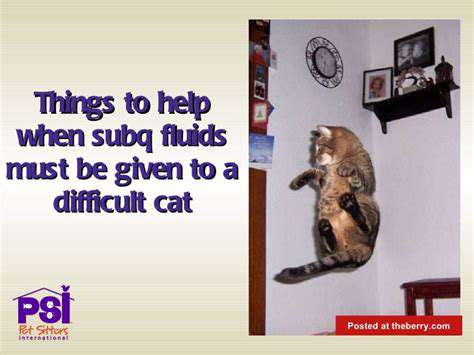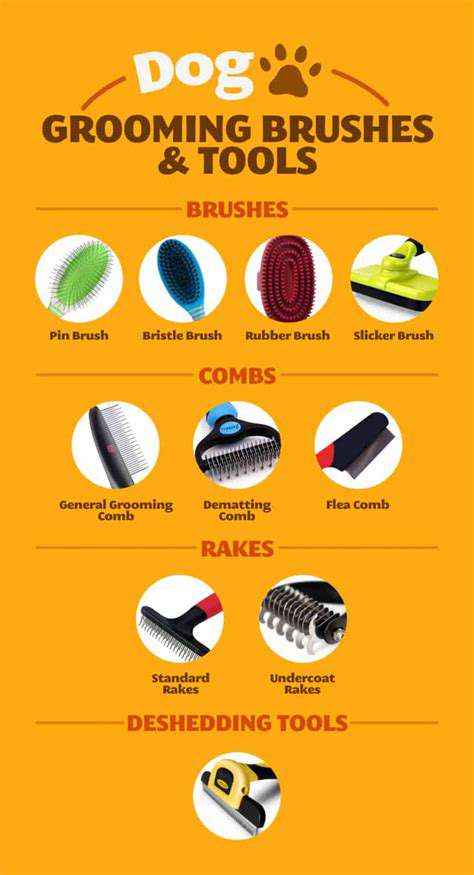How to Give Your Cat a Bath (Without a Fight)
Preparing Your Cat for the Bath

Preparing the Environment
Getting your feline companion ready for a bath starts with crafting a secure and soothing space. Identify a spot that's both well-lit and easy to access, making it the designated washing zone. Gather all necessities beforehand - specialized cat shampoo, plush towels, and a textured mat to prevent slips. A tranquil setting dramatically lowers your pet's anxiety, transforming what could be a chaotic ordeal into a manageable routine. Maintain a warm ambiance to help your cat relax.
Meticulous setup lays the foundation for a positive bathing experience. Beyond mere equipment, it's about cultivating an atmosphere of trust. Eliminate loud noises and sudden movements that might startle your pet. Some owners find that soft classical melodies or nature sounds help create a serene environment. The calmer the surroundings, the more cooperative your cat will likely be.
Preparing Your Cat
Acclimating your feline to human touch is paramount. Begin with brief daily handling sessions, gradually increasing duration. This builds confidence and makes bath time less intimidating. Your own composed demeanor significantly influences your pet's response - animals are remarkably perceptive to human emotions.
Water introduction should be gradual. Let your cat inspect the bathing area when dry, allowing them to approach the empty tub voluntarily. Later, introduce the sound of running water at low volume. This progressive exposure helps desensitize them to what might otherwise be frightening stimuli.
Pheromone-based calming products can work wonders. These synthetic replicas of natural feline pheromones create a sense of security. When used correctly, these aids can transform bath time from traumatic to tolerable. Apply them in the bathing area about 15 minutes before beginning the process.
Always have a warm, absorbent towel prepared for immediate post-bath wrapping. This prevents chilling and provides comforting pressure. Pair the experience with favorite treats to create positive associations - the equivalent of a spa treat for humans.
Choosing the Right Tools and Supplies

Selecting Appropriate Equipment
The difference between a smooth bathing session and a disastrous one often comes down to proper tools. Specialized feline shampoos are formulated for delicate skin pH balance. Proper implements don't just facilitate the process - they protect your pet's health. Avoid repurposing human or canine products which can cause irritation.
Evaluate each tool's design with feline comfort in mind. Rubber-tipped brushes prevent scratches during pre-bath grooming. Handheld sprayers with adjustable pressure settings allow for gentle rinsing. These thoughtful selections demonstrate how proper equipment can turn a necessary chore into a bonding experience.
Essential Bathing Accessories
Beyond the basics, several often-overlooked items can make a substantial difference. A well-prepared bathing station prevents mid-process scrambling. Include cotton balls for ear protection, a non-breakable cup for controlled pouring, and perhaps most importantly, rubber gloves for your protection.
Consider keeping a grooming kit dedicated solely to bath time. This ensures all necessary items remain together and clean between uses. The psychological impact of consistency shouldn't be underestimated - familiar objects can provide comfort during an unfamiliar activity.
Budget-Smart Solutions
While premium products exist at various price points, effective solutions needn't break the bank. Strategic spending focuses resources where they matter most. Splurge on pH-correct shampoo, but perhaps opt for affordable microfiber towels. The key is understanding where quality directly impacts safety and comfort versus areas where alternatives suffice.
Many household items can be repurposed creatively. A plastic colander makes an excellent rinse shield for nervous cats, while a window squeegee efficiently removes excess water from long coats. The most expensive option isn't always the best - sometimes simple ingenuity works wonders.
Drying and Post-Bath Care
Effective Drying Techniques
The drying process requires as much care as the bath itself. Begin with thorough blotting using ultra-absorbent microfiber towels. Proper drying prevents skin issues and keeps your cat comfortable. For long-haired breeds, consider a pet-specific blow dryer with adjustable heat settings - always test the temperature on your inner wrist first.
Create a warm retreat space lined with fresh towels where your cat can complete the drying process naturally. Position this area away from drafts but not directly near heat sources. The goal is gradual, comfortable moisture evaporation without causing thermal stress.
Post-Bath Monitoring
Observe your cat closely after bathing. Check for any signs of irritation or lingering dampness in skin folds. Attentive aftercare prevents complications and reinforces positive associations. Offer favorite treats and gentle praise to reward cooperation.
Some cats may benefit from a post-bath brushing session once completely dry. This helps redistribute natural oils and prevents matting. Keep these sessions brief and positive, gradually increasing duration if your cat shows willingness.

Read more about How to Give Your Cat a Bath (Without a Fight)
Hot Recommendations
- Best Pet Bowls: Stainless Steel and Ceramic
- Pet Hydration: Why It's Crucial
- Stop Counter Surfing: Training Your Dog to Stay Off
- Pet Hypothyroidism: Symptoms and Management
- Signs of Pet Liver Disease: What to Watch For
- Pet Emergency Kits: What to Pack
- Dangers of Xylitol: Toxic to Dogs
- Dealing with Pet Diarrhea: When to See a Vet
- Preparing Pets for Travel: Tips for a Smooth Trip
- Pet Depression: Recognizing the Signs










